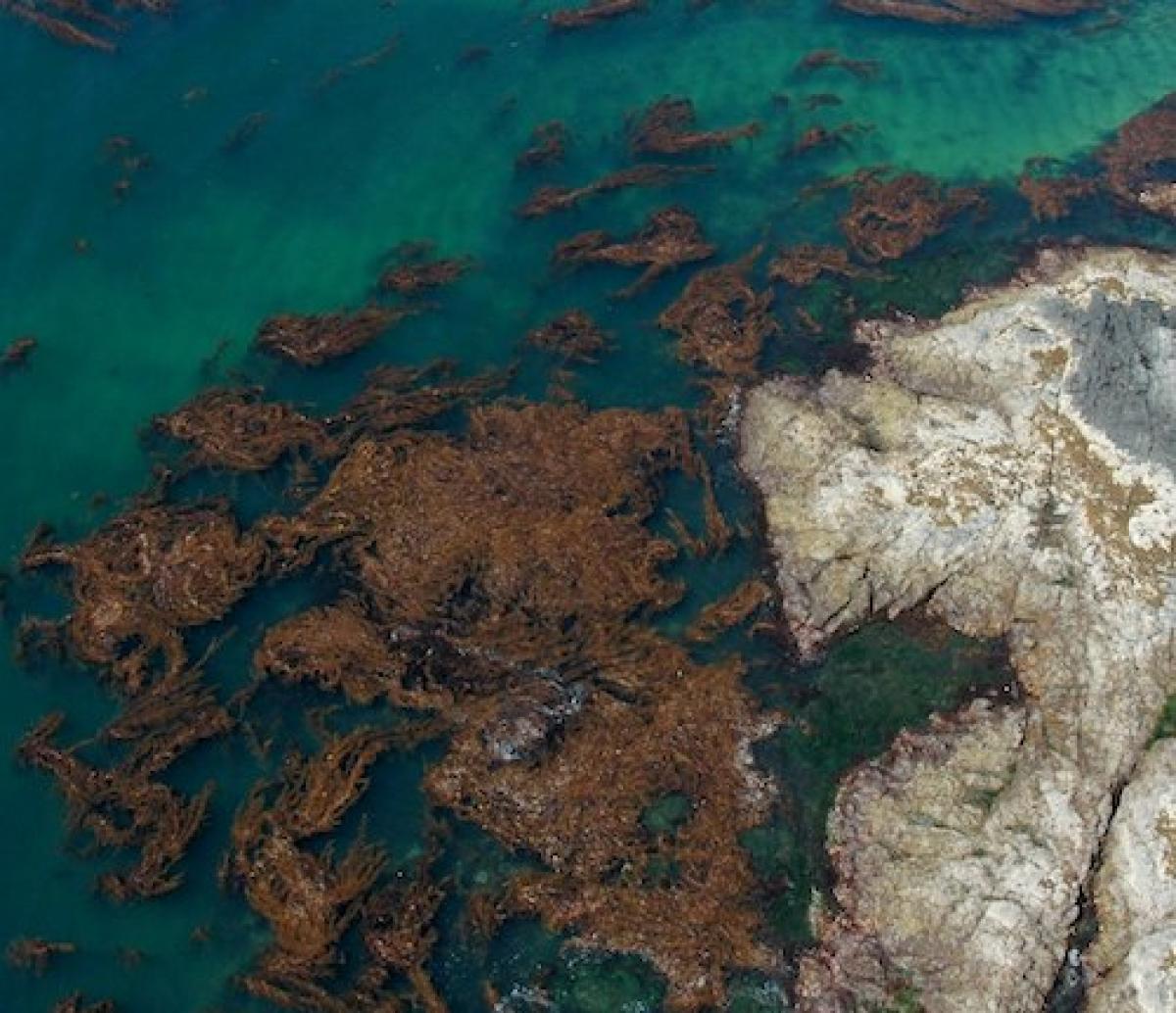Seasons of the Sea

Because salt water is usually toxic for plants, we don’t find as many plant species in the coastal biome as we might expect. But there are some exceptions, like mangrove trees that live above water and sip the salty sea, and sea grasses that live their entire lives under the surf.
Instead, the marine biomes are home to many species of marine algae, which sometimes look like plants but are specifically adapted to life in the ocean. The larger algae, sometimes called kelp, look like land plants because they have a stalk, big leaves, and can grow to be over a hundred feet long.
Kelp are bound to rocks at the bottom of coastal seas and grow up to the surface to reach the sunlight, like an underwater forest. The smaller algae, or phytoplankton, can make food from sunlight like land plants, but they are tiny individual cells that float in the water near the surface.
The Ocean in Bloom

Algae and plankton in the ocean need nutrients and sunlight, just like the trees and plants that live on land. The similarities between these marine and land organisms don’t end there, though.
These algae and plankton also respond to the seasons similar to flowers that bloom in the spring.
When conditions are right, the sunlight, nutrients, and cool water combine to help algae grow quickly. They grow so fast that they can paint the ocean waves with shades of green, blue, teal, and even red. Marine biologists call these events algal blooms.
Changes in weather during spring and summer are good for both land plants and ocean algae. This changing weather can stir up the ocean waters or bring rain, moving more nutrients into the sea. These increased nutrients and long summer days form algal blooms.

Algal blooms usually happen in the same season that trees grow new leaves. Also like trees, algae use sunlight to produce oxygen. Because algae float on water, algal blooms can cover great extents of the ocean's surface.
With the sun’s help, marine algae actually produce more of the oxygen we breathe than all of the plants growing on land.
However, there is a downside to all this oxygen-producing algae. Sometimes the algae grow so fast and in such large numbers that they die before animals can eat them. Bacteria in the silt at the coastal floor eat the dead algae, using up oxygen in the process. This can cause areas of water that have very little oxygen, making it impossible for fish and other organisms to live there. These areas are called "dead zones."
Polar Life
As the sun slowly moves higher in the sky during summer, its light unlocks the polar coasts from the icy grip of winter. Here, the coast has been covered with thick layers of sea ice stretching out from land.

Once summer comes to places like Greenland or Antarctica, the sea ice melts and releases many nutrients and organisms from their frozen embrace.
The melting ice also lets the sun reach down into the cold waters, letting algae produce some of the largest blooms on the planet.
Many marine animals migrate to the poles in summer to eat at this ice burg buffet. Whales come to slurp up the plankton soup and seabirds scoop up fish for their chicks. These animals feed around the clock to eat their fill before winter comes and the coastal waters freeze solid once more.
Additional images via Wikimedia Commons. Image of kelp near tide pools via Alaska ShoreZone Program, NOAA.
Read more about: Contemplating the Coasts
Bibliographic details:
- Article: Plants and Producers of the Coast
- Author(s): Dr. Biology
- Publisher: Arizona State University School of Life Sciences Ask A Biologist
- Site name: ASU - Ask A Biologist
- Date published: 17 Nov, 2014
- Date accessed:
- Link: https://askabiologist.asu.edu/plants-and-producers-coast
APA Style
Dr. Biology. (Mon, 11/17/2014 - 15:56). Plants and Producers of the Coast. ASU - Ask A Biologist. Retrieved from https://askabiologist.asu.edu/plants-and-producers-coast
Chicago Manual of Style
Dr. Biology. "Plants and Producers of the Coast". ASU - Ask A Biologist. 17 Nov 2014. https://askabiologist.asu.edu/plants-and-producers-coast
Dr. Biology. "Plants and Producers of the Coast". ASU - Ask A Biologist. 17 Nov 2014. ASU - Ask A Biologist, Web. https://askabiologist.asu.edu/plants-and-producers-coast
MLA 2017 Style

The coastal waters have some plants, but are mainly dominated by algae, like the brown algae shown here near tide pools.
Be Part of
Ask A Biologist
By volunteering, or simply sending us feedback on the site. Scientists, teachers, writers, illustrators, and translators are all important to the program. If you are interested in helping with the website we have a Volunteers page to get the process started.

